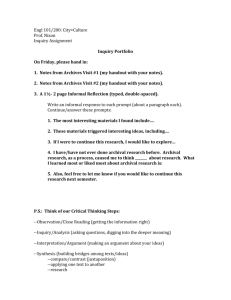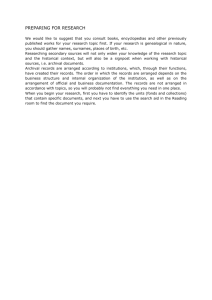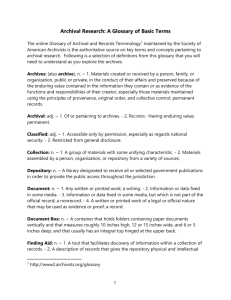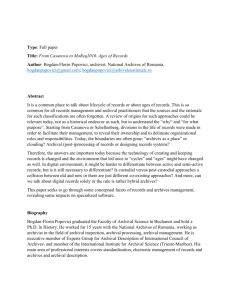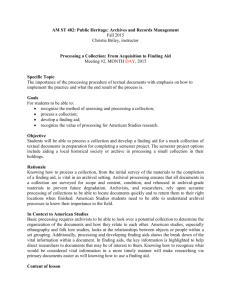Doing Qualitative Research with Archival Data:
advertisement
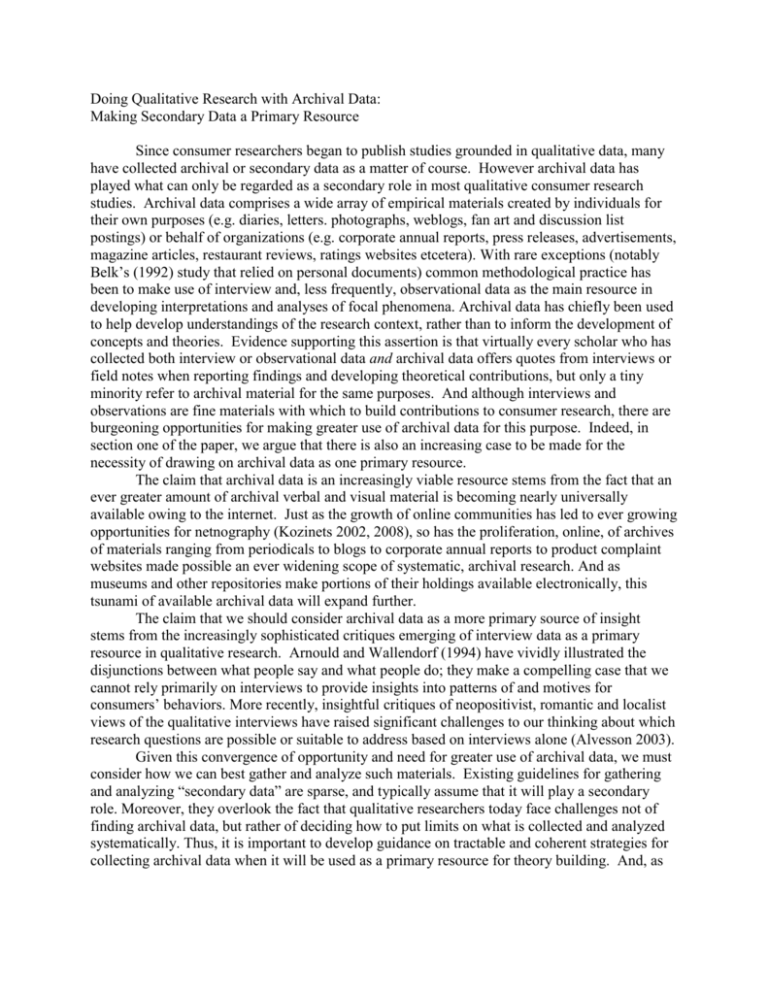
Doing Qualitative Research with Archival Data: Making Secondary Data a Primary Resource Since consumer researchers began to publish studies grounded in qualitative data, many have collected archival or secondary data as a matter of course. However archival data has played what can only be regarded as a secondary role in most qualitative consumer research studies. Archival data comprises a wide array of empirical materials created by individuals for their own purposes (e.g. diaries, letters. photographs, weblogs, fan art and discussion list postings) or behalf of organizations (e.g. corporate annual reports, press releases, advertisements, magazine articles, restaurant reviews, ratings websites etcetera). With rare exceptions (notably Belk’s (1992) study that relied on personal documents) common methodological practice has been to make use of interview and, less frequently, observational data as the main resource in developing interpretations and analyses of focal phenomena. Archival data has chiefly been used to help develop understandings of the research context, rather than to inform the development of concepts and theories. Evidence supporting this assertion is that virtually every scholar who has collected both interview or observational data and archival data offers quotes from interviews or field notes when reporting findings and developing theoretical contributions, but only a tiny minority refer to archival material for the same purposes. And although interviews and observations are fine materials with which to build contributions to consumer research, there are burgeoning opportunities for making greater use of archival data for this purpose. Indeed, in section one of the paper, we argue that there is also an increasing case to be made for the necessity of drawing on archival data as one primary resource. The claim that archival data is an increasingly viable resource stems from the fact that an ever greater amount of archival verbal and visual material is becoming nearly universally available owing to the internet. Just as the growth of online communities has led to ever growing opportunities for netnography (Kozinets 2002, 2008), so has the proliferation, online, of archives of materials ranging from periodicals to blogs to corporate annual reports to product complaint websites made possible an ever widening scope of systematic, archival research. And as museums and other repositories make portions of their holdings available electronically, this tsunami of available archival data will expand further. The claim that we should consider archival data as a more primary source of insight stems from the increasingly sophisticated critiques emerging of interview data as a primary resource in qualitative research. Arnould and Wallendorf (1994) have vividly illustrated the disjunctions between what people say and what people do; they make a compelling case that we cannot rely primarily on interviews to provide insights into patterns of and motives for consumers’ behaviors. More recently, insightful critiques of neopositivist, romantic and localist views of the qualitative interviews have raised significant challenges to our thinking about which research questions are possible or suitable to address based on interviews alone (Alvesson 2003). Given this convergence of opportunity and need for greater use of archival data, we must consider how we can best gather and analyze such materials. Existing guidelines for gathering and analyzing “secondary data” are sparse, and typically assume that it will play a secondary role. Moreover, they overlook the fact that qualitative researchers today face challenges not of finding archival data, but rather of deciding how to put limits on what is collected and analyzed systematically. Thus, it is important to develop guidance on tractable and coherent strategies for collecting archival data when it will be used as a primary resource for theory building. And, as its role becomes more central, it is important that we give consideration to appropriate ways of interpreting such data. The second section of this paper discusses how researchers can make decide what archival data to collect when they must determine hat to include and what to exclude from a data collection in progress. In initial stages of a research project, researchers benefit from creating an inventory of the sources of archival material they could access, and examining selections of data from each in order to familiarize themselves with their phenomenon of interest and with the contents of each potential archival data source. As the research question(s) of interest are identified it becomes useful for the researchers to consider three factors related to their question(s). The first is the “unit of analysis.” While rarely explicitly considered in qualitative research, our paper makes the case that clarity regarding the unit of analysis can help the researcher make defensible decisions to include some archival sources and to exclude others. A second consideration in relation the research question is whether or not it concerns a process that is expected to span some duration. Understanding events in that duration that are of theoretical interest (e.g., emergence, transformation, or termination) can also help to identify which archival sources can be excluded and which are most likely to be usefully included. A third factor related to research question(s) is whether they are concerned with developing hermeneutic understanding of the perspective of some individuals or group of actors. Again, as we elaborate in the paper, clarity on this aspect of the research question can help to identify which sources of archival data are critical to consider as a primary resource and which can be regarded as secondary. Examples are developed to illustrate and elaborate upon these criteria. In the third section of the paper, we detail a set of questions that researchers can pose about specific sets of archival data that will help them make appropriate choices when analyzing that particular data. Briefly, these questions prompt the researcher to consider the circumstances under which the data was created, the limitations on the perspectives of those who created it, and the possible motivations that shape what is included and omitted, and how the phenomenon of interest is portrayed. Examples are again discussed in this section. In the concluding section we identify research topics that lend themselves well to investigation using archival data as a primary resource.
